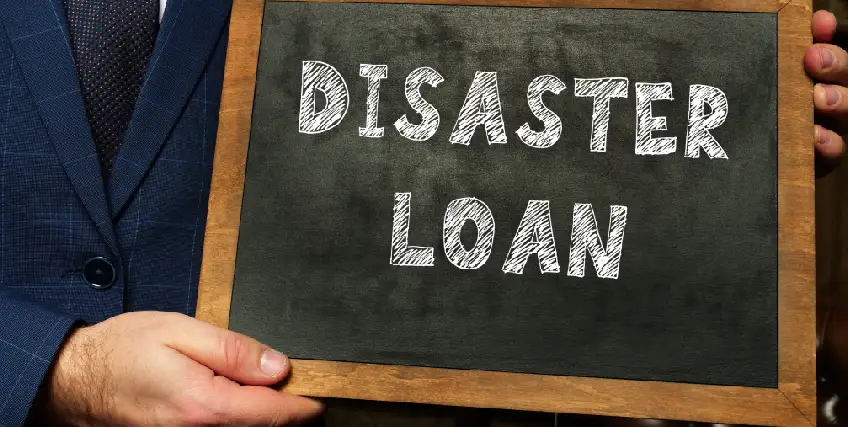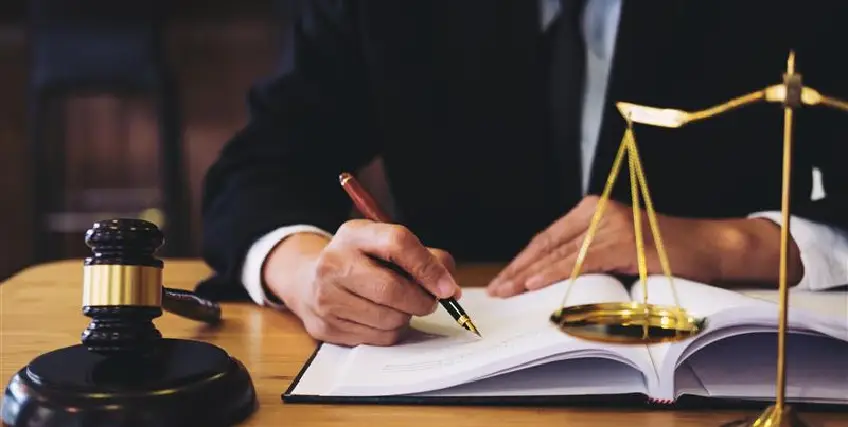Facing Storm Damage in Texas? Here’s How to Apply for SBA Disaster Loans
April 23, 2025 | Last Updated on: April 23, 2025

Natural calamities have always been a part of life for most Texans. But, in 2025, tornadoes, straight-line winds, and wildfires have left small business owners across the state of Texas struggling with massive challenges. From lost revenue to serious property damage, recovery can feel overwhelming.
But there’s help. The U.S. Small Business Administration (SBA) offers low-interest disaster loans to help business owners rebuild and stabilize. These loans for small businesses in Texas are designed to help cover repairs, lost income, and keep operations running during hard times.
This article explains what you need to know about SBA disaster assistance in Texas. It covers who qualifies, how to apply, what documents you need, and the common mistakes you should avoid at all costs. Whether you own a storefront in Houston or run a mobile business in rural Texas, this article will take you through the disaster loan application process and help you get the support your business needs.
If you're researching loans for small businesses in Texas, especially after a disaster strikes, this article will point you in the right direction.
What Is an SBA Disaster Loan?
An SBA disaster loan is a low-interest federal funding, created particularly for businesses, nonprofits, and cooperatives in areas impacted by a natural disaster. These aren’t grants - they must be repaid - but they come with long terms, fixed interest rates, and flexibility designed to help small businesses recover.
There are two main types of SBA disaster loans for small businesses in Texas: Business Physical Disaster Loans and Economic Injury Disaster Loans (EIDL).
Each of these loans addresses different needs and situations that small business owners across Texas may face. Both the financing options are helpful if you're seeking reliable loans for small businesses in Texas to support operations during crisis recovery.
The SBA offers loans for small businesses in Texas with terms tailored to post-disaster recovery needs, helping owners manage rebuilding and ongoing costs.
Types of Disaster Loans
There are two types of disaster loans:
Business Physical Disaster Loans
If your property was damaged - equipment, inventory, machinery, or your actual place of business - this loan helps you repair or replace it. You can borrow up to $2 million. These funds can be used for essential property, not upgrades.
The SBA is currently offering 12-month payment deferments where no interest accrues. This will help business owners to rebuild before worrying about repayment.
To qualify, your business must be in a declared disaster area in Texas. These physical loans for small businesses in Texas have helped thousands resume operations after hurricanes, wildfires, and storms.
The deadline to apply for physical damage loans from the Welder Complex Fire is May 20, 2025. This type of funding for SBA, a loan solution, has been critical to businesses trying to rebuild faster.
If you're dealing with physical property loss, these loans for small businesses in Texas are your best bet for timely, structured support.
Economic Injury Disaster Loans (EIDL)
If you didn’t suffer physical damage but lost revenue, the Economic Injury Disaster Loan (EIDL) can help cover expenses like payroll, rent, and bills. It’s ideal for businesses that had to shut down, lost customers, or faced long-term disruption.
You can borrow up to $2 million, with repayment terms stretch up to 30 years. These loans help maintain working capital until normal operations resume.
These types of loans for small businesses in Texas can be a lifeline when your income dries up, but bills continue. EIDL is designed to keep business doors open and employees on payroll.
Keep in mind that the deadline to apply for an EIDL related to the 2025 Texas wildfires is December 19, 2025. Start your disaster loan application early so you don’t miss out on this key support.
Visit sba.gov/disaster to check if your business qualifies.
For many, EIDL represents the most accessible form of loans for small businesses in Texas after a storm or wildfire.
Who Can Apply in Texas?
If your business operates in a federally declared disaster area in Texas, it may be eligible for an SBA disaster loan. This includes counties impacted by tornadoes, wildfires, or other declared emergencies.
Eligible entities include:
- Small businesses of all sizes
- Sole proprietors
- Private nonprofit organizations
- Agricultural cooperatives
And that's not all. If you run a home-based business, mobile operation, or lease commercial space, you may be able to qualify. The loan amount is based on actual losses and the applicant's financial condition.
Even if your insurance is pending, don’t delay your application. You must disclose your coverage status, but you can apply for SBA disaster loan funds to cover gaps.
Texas businesses that have suffered either physical damage or economic loss should take immediate action. Both scenarios are covered under different loan programs. Keep in mind that you can apply for more than one type of SBA loan if your situation qualifies.
For those seeking loans for small businesses in Texas, the SBA programs are one of the most reliable assistance tools post-disaster. Whether you’re in Houston, Dallas, or a rural part of the state, SBA loans are designed to help you recover.
You can also get support through local Disaster Recovery Centers and Small Business Development Centers. Minority-owned, veteran-owned, and woman-owned businesses are strongly encouraged to apply.
If you're unsure, the SBA's online tool can help you determine your eligibility and connect you with help nearby.
Many applicants use these loans for small businesses in Texas as a path to steady recovery and future resilience.
How Much Can You Borrow and at What Terms?
The SBA offers up to $2 million in low-interest loans for small businesses in Texas recovering from disaster events. The actual loan amount depends on your business damage, operating losses, and overall financial condition.
Here’s how it works:
- Physical damage loans help rebuild or replace your commercial property and inventory.
- EIDL loans provide working capital to keep your business afloat during recovery.
If you qualify, your disaster loan application may also be eligible for:
- Deferred payments for 12 months (no interest accrual)
- Extended repayment terms if financial need is shown
SBA reviews your documents, financials, and overall losses before finalizing the amount. You’ll receive a decision and, if approved, an offer with full details.
If you're actively researching loans for small business in Texas, this step could be your most important financial move. SBA loan options, tailored to your disaster recovery needs, can help you keep your business going and even plan for resilience.
For business owners in Houston, Austin, or smaller Texas towns, these loans for small businesses in Texas provide access to funding that can cover vital repairs and bridge income gaps.
Whether you're a local retailer or part of a supply chain, these federal disaster loans are meant to help. But you must start the process early.
Begin your disaster loan application at lending.sba.gov and prepare your paperwork thoroughly.
Mistakes That Delay SBA Disaster Loan Approvals
It is very frustrating to get your application denied or delayed, especially when you are in dire need of financial support to recover from losses caused by natural disasters. However, mistakes like these are common and here are some examples:
- Incomplete Documentation: Missing tax returns, financial statements, or damage photos can stall your request. Double-check all requirements before submitting.
- Inaccurate Business Info: Ensure your legal business name, EIN, and address match what's on file with the IRS and state registry.
- Ignoring Insurance Details: Even if your insurance claim is pending, SBA needs to know about your policy and what’s covered.
- Delayed Communication: As SBA often follows up for more information, you should try not to miss calls or ignore emails as it might slow things down.
- Wrong Eligibility: For your business to be eligible for this type of loan, you must be in a declared disaster area. Confirm your business qualifies by checking sba.gov/disaster.
For small businesses in Texas, missing even one step in the loan application process could mean a missed opportunity. That’s why loans for small businesses in Texas require careful attention.
Be thorough with your disaster loan application. If need be, work with local advisors. Many business owners in Texas rely on these loans for small businesses in Texas to stay open during hard times. So, you should take this step very seriously.
Conclusion
When faced with any natural disaster, recovering from that might seem impossible. But that's not true. Recovery is definitely possible. If you're facing losses, know that loans for small businesses in Texas are available through the SBA to help you rebuild.
In order to increase the chances of your loan approval, you need to thoroughly understand the types of funding available, how to apply for an SBA disaster loan, and how to avoid common pitfalls. These aren’t just loans – they're a safety net for business survival.
If your property, equipment, or revenue took a hit this year, don’t delay. Explore SBA’s disaster assistance programs. Use resources like sba.gov/disaster and local support networks to get started.
Strong recovery begins with smart action. These loans for small businesses in Texas are designed to get you back on your feet – stronger, smarter, and more resilient than before.
FAQs
What’s the deadline to apply?
There is no set deadline as it varies depending on the disaster. For instance, the EIDL deadline for the 2025 Texas wildfires is December 19, 2025. For physical loans from the Welder Complex Fire, it’s May 20, 2025. Just to be sure, always check sba.gov/disaster for current dates.
Can I use EIDL for personal expenses?
EIDL funds are only meant for business-related expenses. That includes rent, utilities, payroll, and other operating costs. Using the funds for personal expenses like home mortgages, car payments, or vacations is strictly not allowed. Any misuse of funds can result in penalties or the loan being called due in full.
Is help available for agricultural businesses?
While some agricultural enterprises fall under the USDA, agricultural cooperatives are eligible for SBA assistance. These include nurseries, livestock operations, and supply chain businesses. Check sba.gov to see which type of loan fits your situation.
What if I’m denied?
If your funding gets denied, you can appeal an SBA loan denial. Poor credit history or incomplete documentation are a few common reasons for loan application rejection. If denied, you’ll receive a letter explaining the reason. Submit additional information or corrections within six months to request reconsideration.



